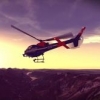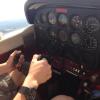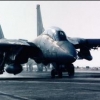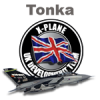Leaderboard
Popular Content
Showing content with the highest reputation on 08/18/2014 in all areas
-
10 points
-
3 points
-
2 points
-
2 points
-
NetFlight AeroTowing = It's possible! I'm still trying to figure out how to make v9 pics not be so dark. I'll post any breakthroughs.2 points
-
2 points
-
2 points
-
Take a look at this So much potential for a flight sim. Probably the best lighting engine I have seen. So damn gorgeous.1 point
-
1 point
-
Okay, this is hugely useful, and the answers are pretty much what I hoped/expected they would be. Thanks very much. I do indeed want to preserve the bump-mapping aspect of the RGB normal map images I've been using. Being able to add specularity data on the alpha channel is going to open up some new opportunities. Thanks again for your patient and thorough explanations.1 point
-
Well we should be very careful about our terminology. The term "normal map" inherently implies a "bump like" map, which is achieved using the RGB channels of the texture. If you say "normal", then you automatically mean "bump". Here is where things get interesting. If x-plane uses the RGB channels of an image for bump effects, then that leaves the alpha channel of that same image (if it has one) free. The alpha channel is simply a grayscale component of what is called a "RGBA" image and you can use the alpha channel of a "normal map" to control shininess if you choose. What you get here then is "two for one". You get both specular AND normal information in one image, saving some VRAM. Most other programs might use a separate grayscale image for the specular and then yet another image for the normal map....thereby having to load up two images. Why not use the same image for both???...well that is what x-plane does. BUT.....lets say you didn't care about the "bump stuff"...you only want the "shininess" part. ...well, let me back up..... The real reason x-plane has two ways of affecting shininess is typically bump/normal maps only use a small percentage of their pixel area for actual bump effects....which wastes VRAM for the other pixels. 9 out of 10 times, what you really want is just the specular effect. So Laminar said, "OK, you can choose to use a "grayscale" image if you are only concerned about shininess only. As far as the "alpha channel" funnies go....it only causes funnies if you have an alpha channel in the grayscale image. If you have an alpha channel in an RGB image, then indeed that alpha channel will be used by x-plane for specular effects. If the RGB image has NO alpha channel, then all you get is bump effects. So as a artist you have 3 choices: Use a grayscale only image (never any alpha channel in grayscale).....this controls specular effects in combination with GLOBAL_specular 1.0 Use a RGB image (no alpha channel) for bump effects only. (no specular effects with this option...and therefore GLOBAL_specular 1.0 directive not needed) Use a RGBA image where the RGB part of the image controls bump effects...and the alpha channel is used to control specular effects. Use this option when you want BOTH bump and specular effects on an object. With this option you DO need the GLOBAL_specular 1.0 directive. Note that the alpha channel of a RGBA image is just a grayscale image....so its possible to do a specular map as a grayscale image, and then later, if you want to add bump effects, simply paste the grayscale image into the alpha channel of your RGBA image...and then do your bump effects in the RGB channels. TomK Oh...and FWIW, the '1.0' part of GLOBAL_specular 1.0 simply means, "white pixels are as shiny as x-plane can make it". You can lower this value to 0.8, or 0.3 or whatever in order to lower the overall effect on the object globally. A value of zero will make the object wholly dull with no specular highlights at all.1 point
-
1 point
-
Don't put pressure on yourself to come up with something in weeks, then give up when you can't. It takes a L—O—N—G time to become proficient in all the skills. I was so appalled by my early work that I scrapped the Comet and started it again, from scratch … twice. If you're one of those people who enjoy the journey as much as getting there, then it's all part of the fun. I regret I sometimes go for a week without tuning in to read the forums, but when you have questions (and you will) please don't hesitate to ask. There are always some in the community who seem to take great pleasure slamming newbies, who might say: "There have been dozens of topics on this already!" and then not give an answer, but there are others who will always help if they can. Search, read, but above all experiment. Don't be afraid to try a new technique. Even if it leads up a blind alley, you will have learned a lot. Good luck! Guy.1 point
-
Slowly port them to dropbox, or some other cloud storage service, or perhaps take your macs for repairs (unless your warranty is voided)1 point
-
1 point
-
Here's a tiny little bit of visual progress as a result of the FMS coding. There is a large amount of infrastructure code to handle route editing, calculation and entry....and what you see here is the beginnings of tying this foundation code into the CDU display itself, beginning with SIDs. Current work is to tie this code into all procedure entry and then into the LEG and RTE pages. https://dl.dropboxusercontent.com/u/955680/CDU2.mp41 point
-
1 point
-
1 point
-
Ah, the whispering death, can't wait to see your progress Sir! Don't be put off by the long journey, research, testing, building and rebuilding all takes lots of time. I'm sure there will be times when you wish you hadn't started, but just keep everything backed up, and put in what ever time you can, when you can. Cheers!1 point
-
Clearly Southwest takes better care of their equipment1 point
-
made some ramp clutter today. Well worn TUG Model GT-50: And a beat up TUG Model MA:1 point






















